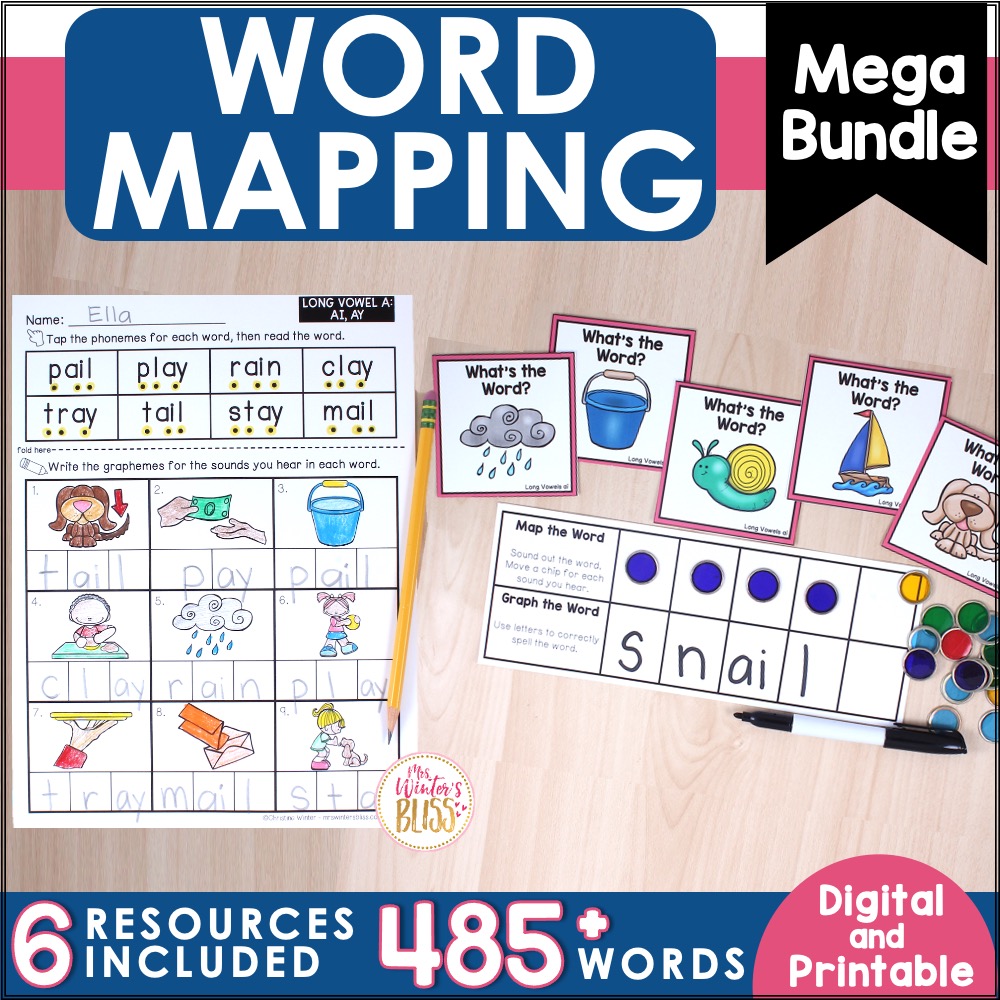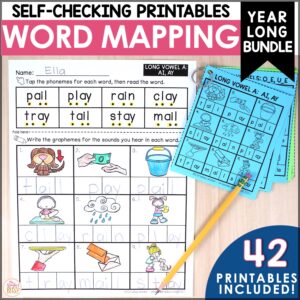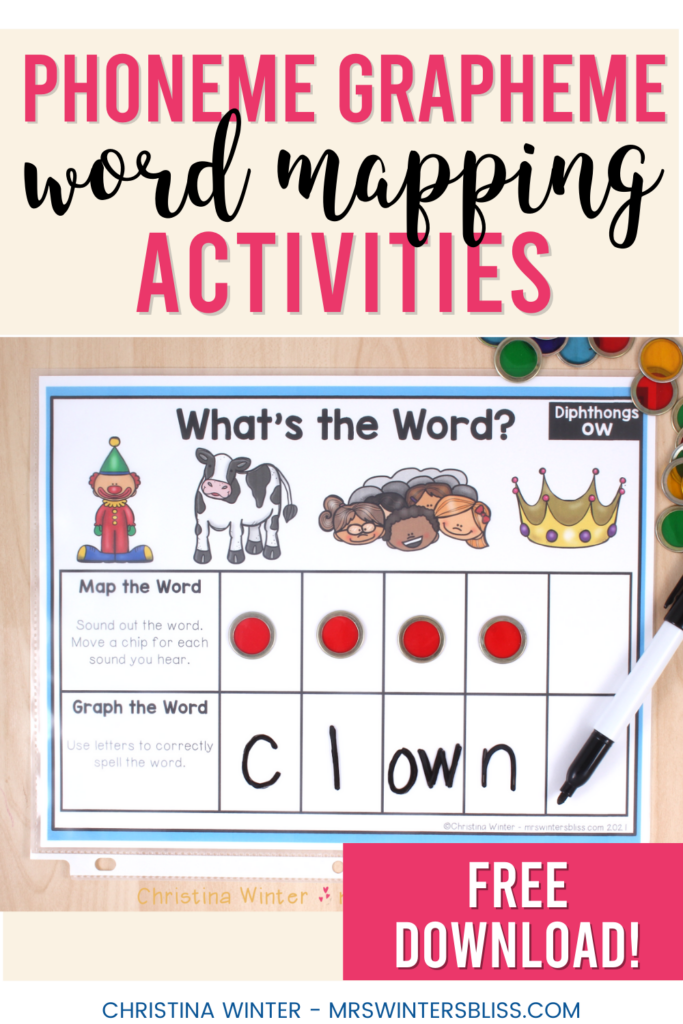
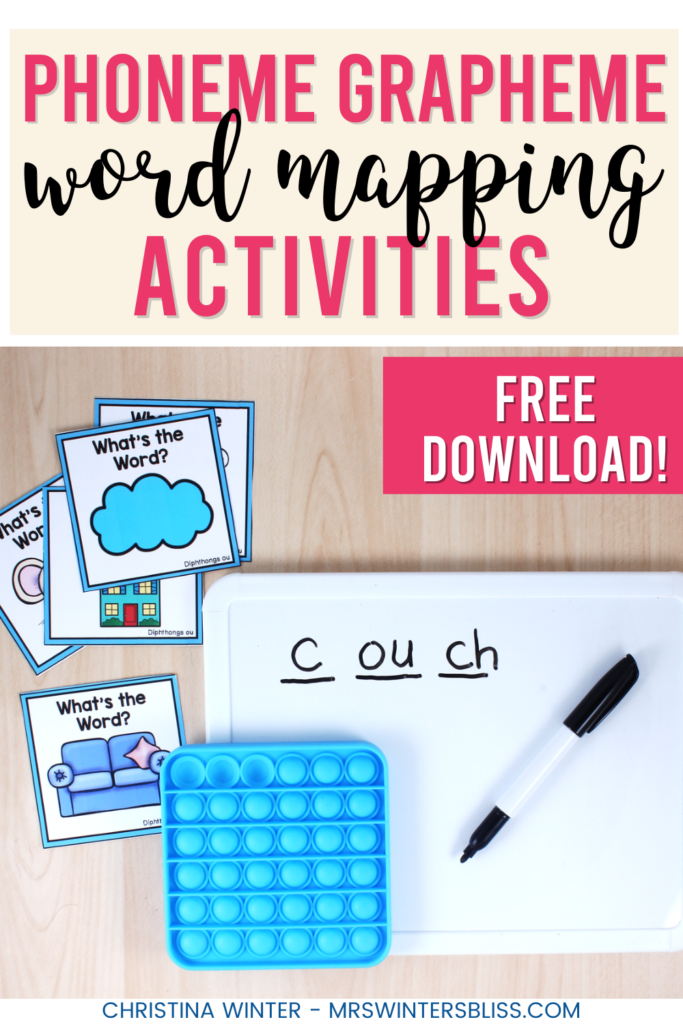
The Science of Reading tells us that Phoneme-Grapheme Mapping is an effective way to promote the mental process of orthographic mapping, help students build their word recognition and become stronger readers. In this post, you’ll get ideas to practice mapping words with your students, details about my Phoneme Grapheme Word Mapping Bundle and a FREE CVC Word Mapping activity perfect for the Kindergarten, first or second grade classroom!
Lately, I have taken a head-first dive into the Science of Reading! I have learned so much about how children actually learn to read. I’ve said goodbye to flashcards and rote memorization and fallen in love with Sound Walls, Heart Words and now….Phoneme-Grapheme Mapping activities! These are all research-based, powerful, engaging ways to help students build their word recognition skills to permanently store words into their sight word memory (this is called orthographic mapping).
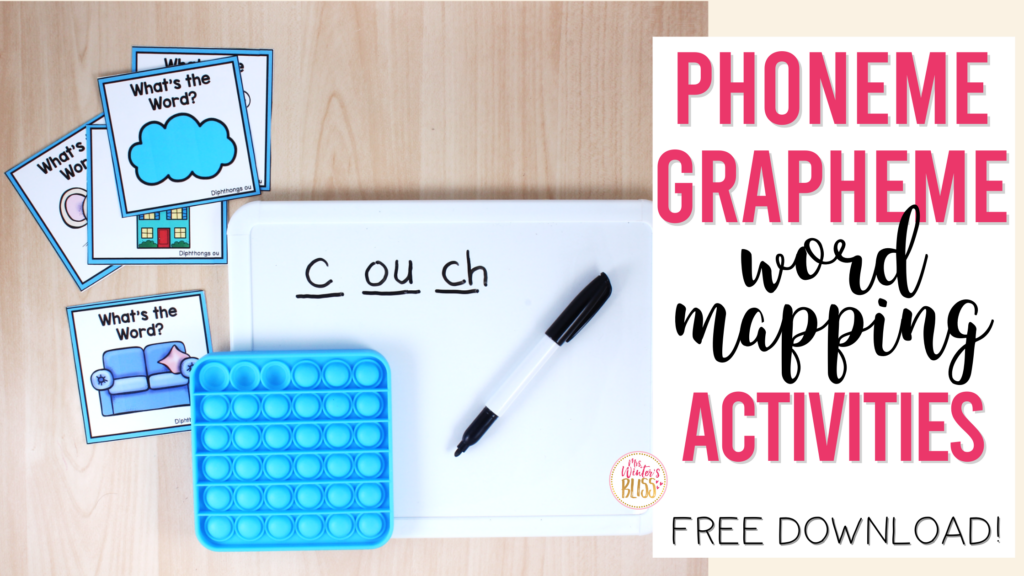
Today I’m excited to share what I’ve learned from research on the Science of Reading and through David Kilpatrick’s book, Equipped for Reading Success about phoneme-grapheme mapping. I’ll provide ideas for activities to give students practice mapping words, share details about my own Word Mapping Mega Bundle, and leave you with a FREEBIE to get you started!
What is Word Mapping?
First, let’s remember that every word has three forms. They have sounds or phonemes, letters or letter combinations (graphemes), and meaning.
Students use the oral language processing part of their brain to map, or connect, the sounds (phonemes) of the word to the letters or letter combinations (graphemes) in a word. This process is called orthographic mapping and it is the mental process we use to permanently store words for immediate retrieval. It is how we take an unfamiliar word and immediately turn it into a sight word.
Word mapping is a physical way to represent the relationship between the phonemes and graphemes. It allows students to physically connect or match the letters with the sounds they represent and helps to encourage the process of orthographic mapping. Ultimately it helps build word recognition and decoding skills that improve fluency in both reading and writing.
When mapping a word with students these are the four basic steps to follow:
- Start with the meaning. Say the word aloud, show your students a picture of the word and make sure they know what it means.
- Now encourage your students to segment the word into sounds. Students can tap their fingers together for each sound they hear.
- Next, place a manipulative down in a sound box for each sound or phoneme they hear.
- Finally, add the graphemes. Match the letter or letter pairs to the phonemes in the given word.
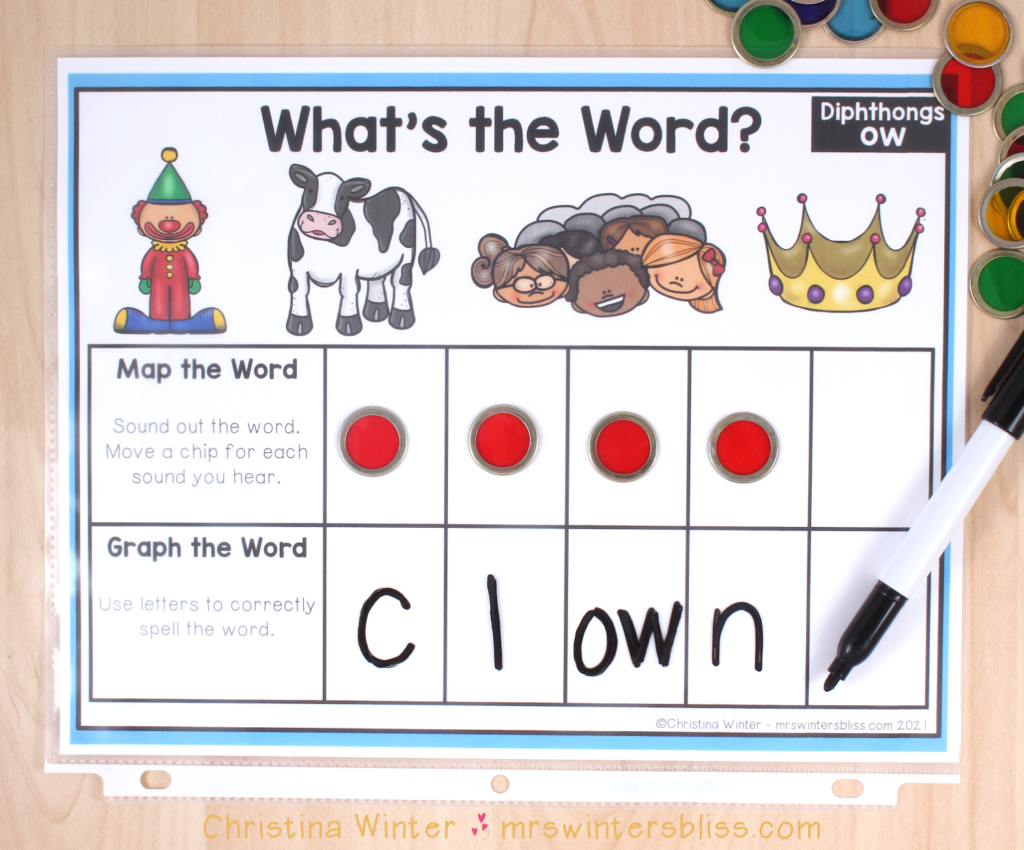
Phoneme Mapping Activities and Ideas
As teachers, we need to give our students plenty of activities that help strengthen their phoneme-grapheme associations.
There are a lot of different activities out there! Because they have both a visual and kinesthetic aspects students find them highly engaging. Here are a few of my favorites….
Silicone Bubble Poppers: These things are all the trend these days so your students will no doubt LOVE using them to help map out their words. Students simply push down a popper for each phoneme they hear in the given word. They then write out the grapheme for each of the phonemes they “popped”.
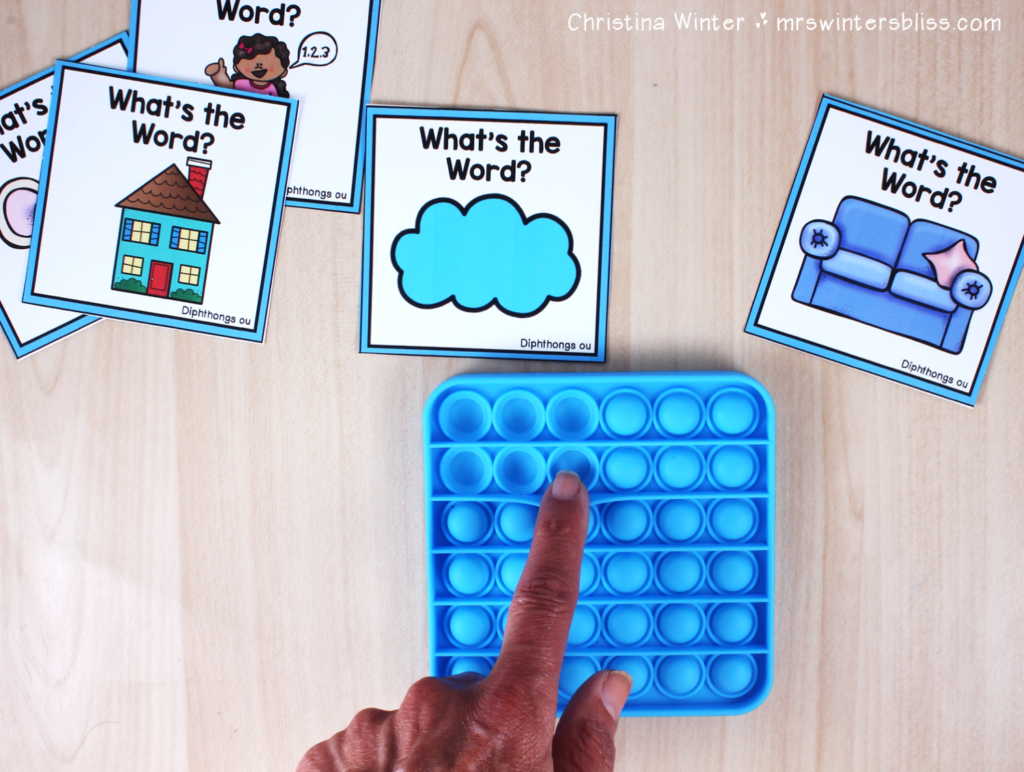
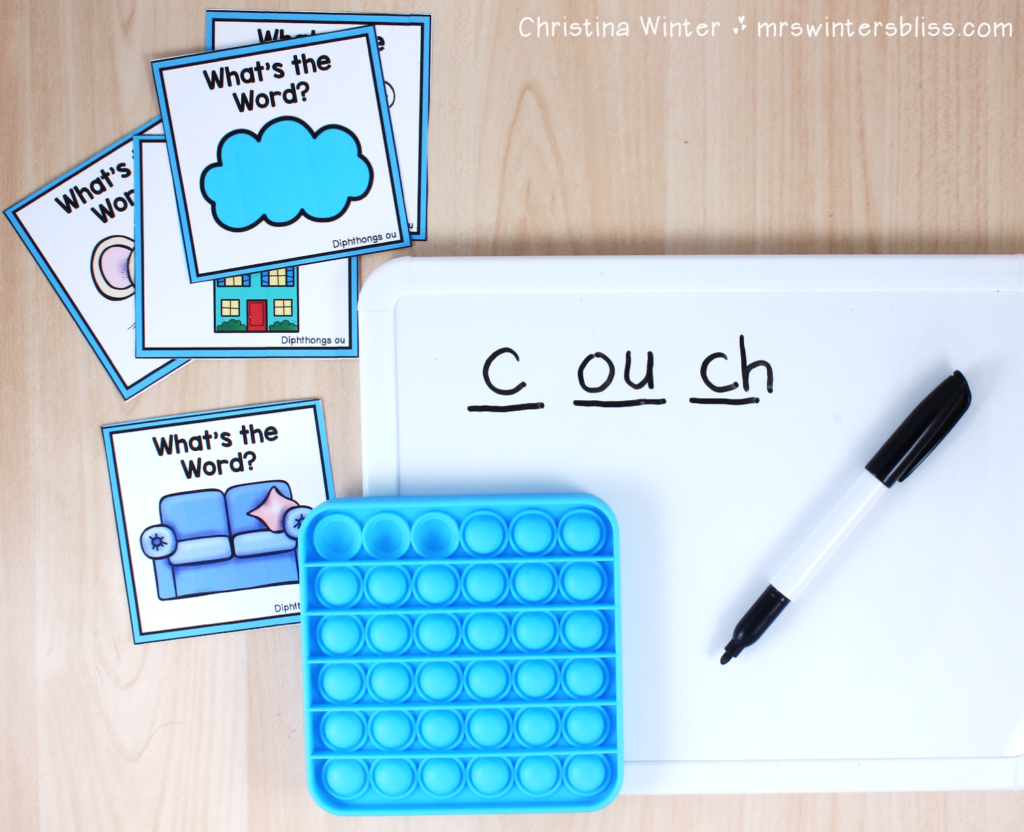
Linking Cubes: Physical linking cubes allow students to build out the given word into phonemes. Students can touch each cube to represent each sound. They then link the cubes together and write out the graphemes that represent each cube. This helps to show students how mapping graphemes to phonemes looks visually.
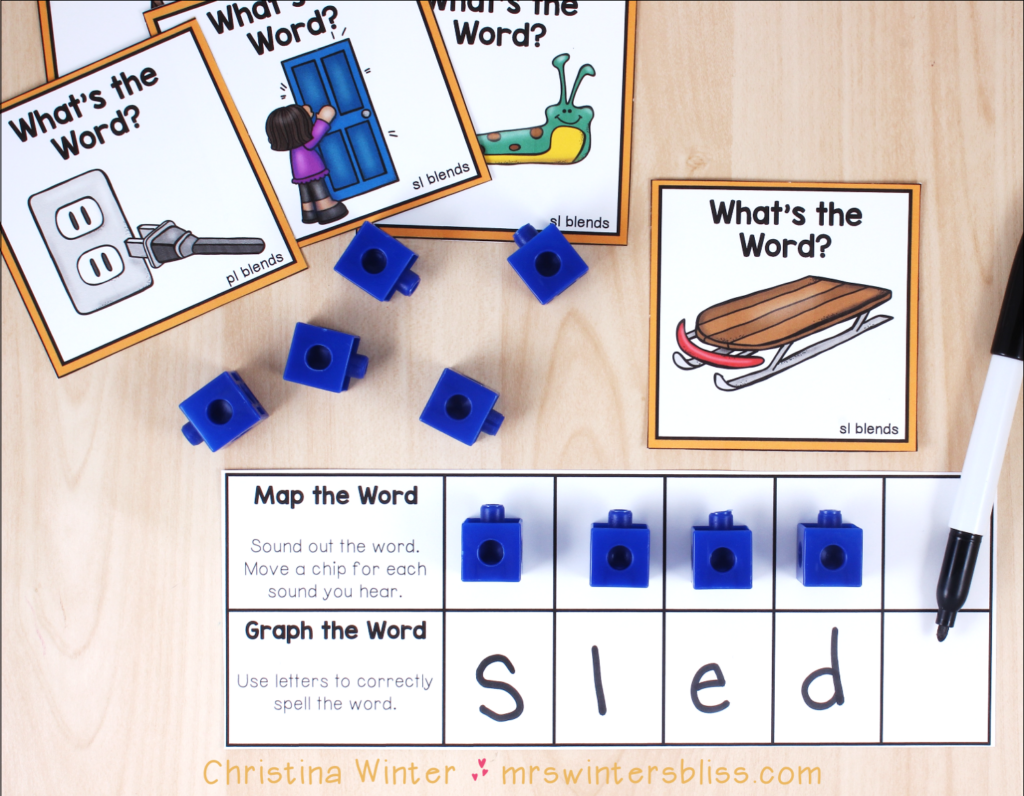
Playdoh Balls: First, give students their own laminated sound box sheet and some play-doh. Have them create little balls of play-doh for each phoneme they hear in the given word. Then they squish the ball with their finger as they repeat each sound aloud. Finally, they can write the graphemes to match each sound. If you don’t want to use play-doh you can always do the same thing with counters, counting bears, coins, whatever you have at your disposal!
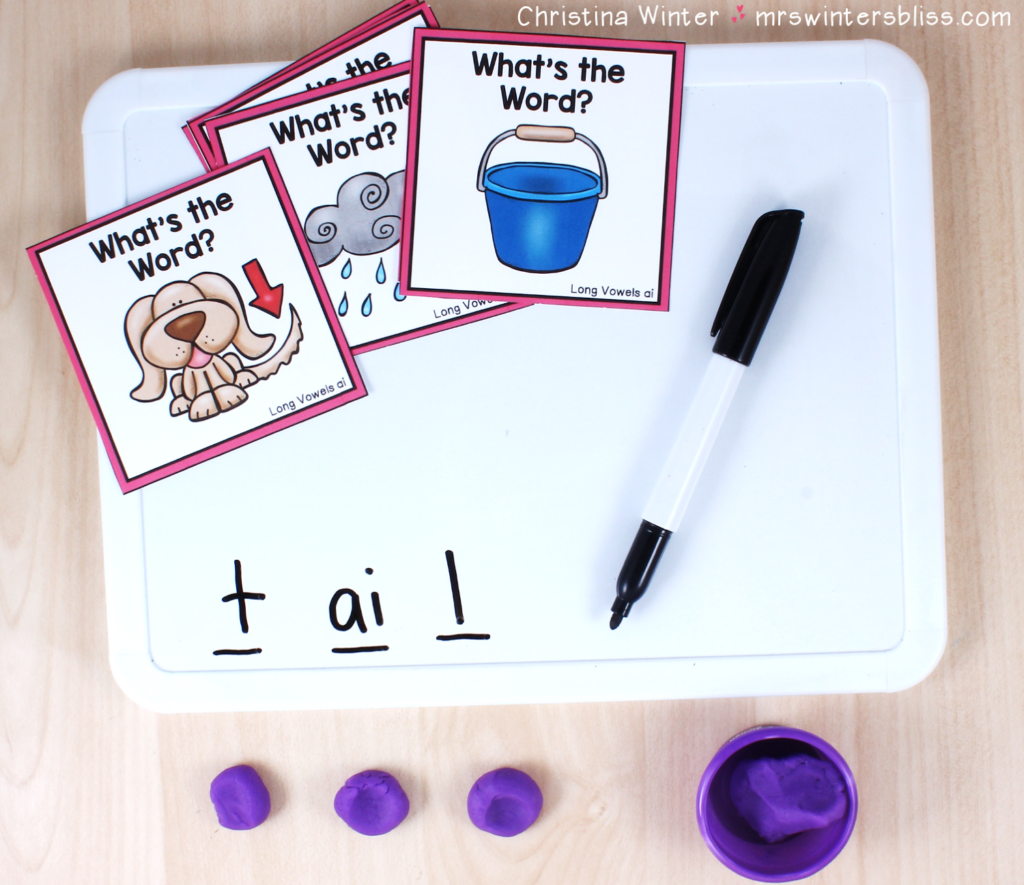
My Word Mapping Resource
Word mapping activities are no doubt a powerful way to help students build their word recognition and decoding skills. The only downside is that creating the activities can take a lot of time! With everything else on your plate I realize you may not have time to prep mapping activities for ALL the phonics patterns you want your students to learn. So to help save your valuable prep time, I have gone ahead and created my own printable and digital Word Mapping Resource!
This resource has EVERYTHING you need to get students mapping words in your classroom. It includes interactive digital slides for over 485 words!
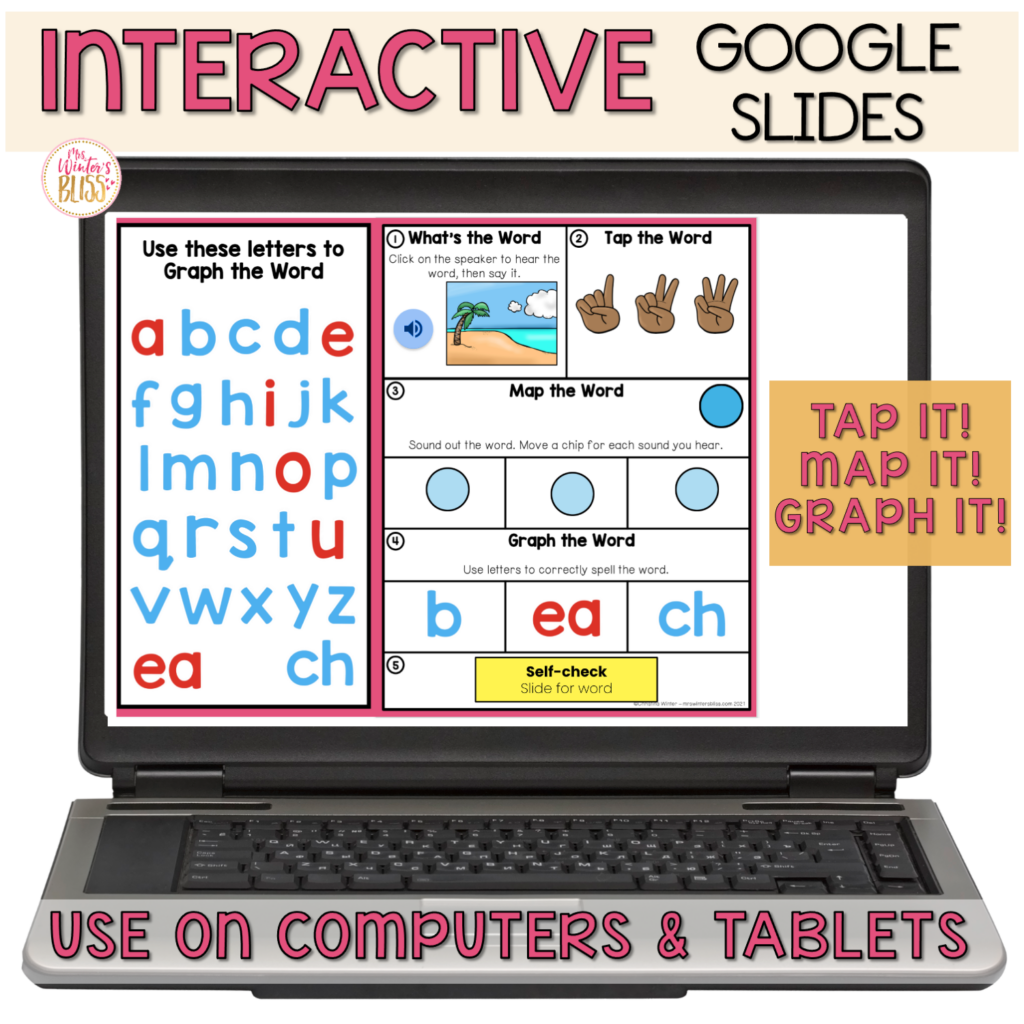
Students will see a picture of the word to build meaning and hear an audio recording of the word. Then they will map the phonemes (sounds) they hear, and finally spell the word using graphemes.
This resource also comes with mapping boards and word image cards for your guided group instruction and independent practice.
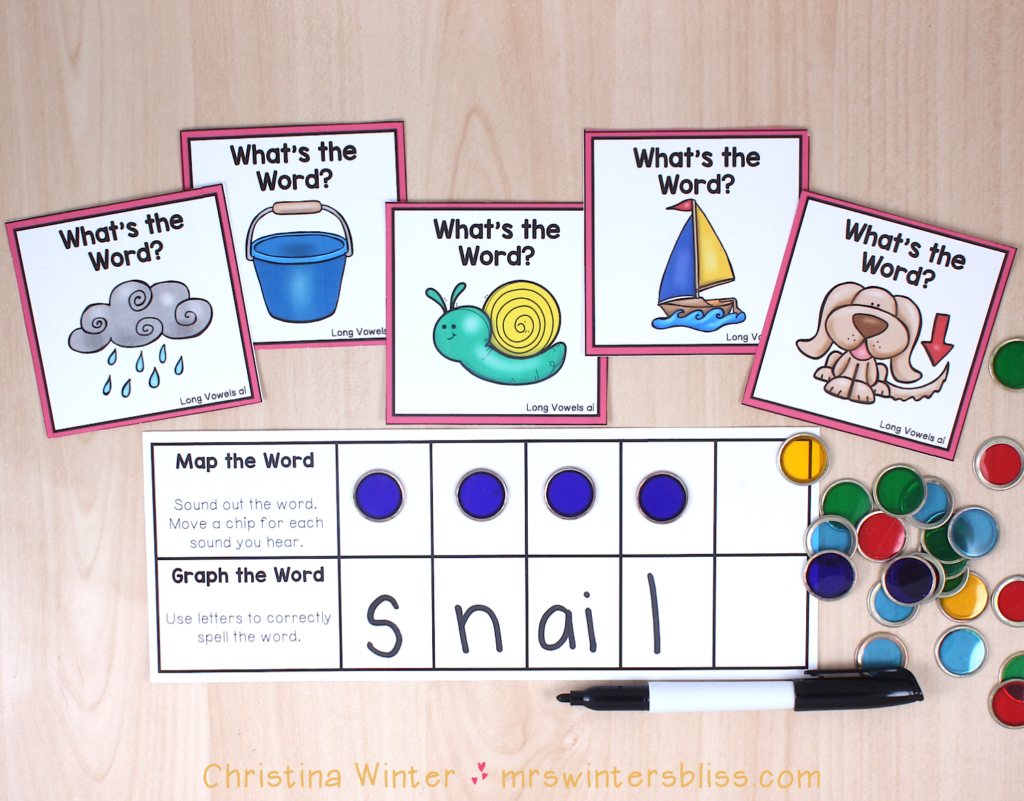
The phoneme tapping and mapping worksheets provide practice with short vowels, blends, digraphs, long vowels, CVCe, R-controlled, and diphthong words. You’ll get 42 printables with self-checking answer keys that are perfect for independent student practice, literary centers, homework, or left as a meaningful activity for a substitute.

Ready to give Word Mapping a try in your classroom? To get you started I’m sharing FREE CVC Word Mapping activities! This sample makes a perfect literacy center or independent activity! Grab it here:
-
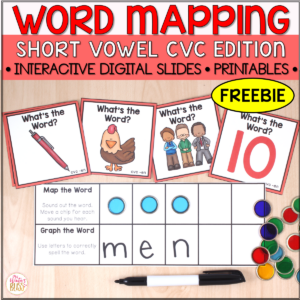 FREE CVC Word Mapping – Connecting Phonemes to Graphemes$0.00Rated 4.98 out of 5 based on 57 customer ratings
FREE CVC Word Mapping – Connecting Phonemes to Graphemes$0.00Rated 4.98 out of 5 based on 57 customer ratings -
Sale Product on sale
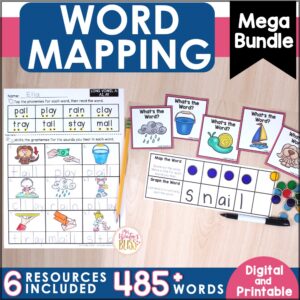 Word Mapping – Connecting Phonemes to Graphemes MEGA BUNDLEEarn 0 Reward Points
Word Mapping – Connecting Phonemes to Graphemes MEGA BUNDLEEarn 0 Reward Points$24.50Original price was: $24.50.$19.60Current price is: $19.60.Rated 5.00 out of 5 based on 12 customer ratings
I hope the information, ideas and resources I’ve shared today will motivate you to bring word mapping into your classroom as you help your students become stronger readers!
–PIN for LATER–


